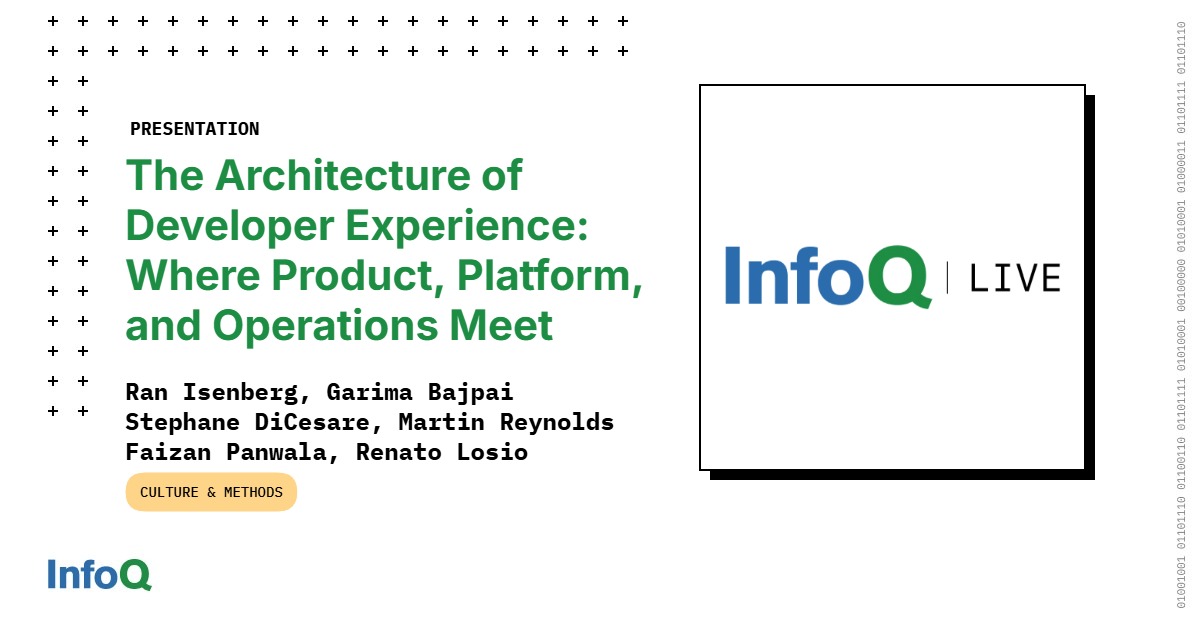
"Today we're going to talk about the architecture of the developer experience, where product, platform, and operations meet. We are going to talk about platform architecture. Platform architecture doesn't exist in a vacuum. They must support collaboration across product, operation, and the teams that build them. As practitioners, how can system, platform, and processes be designed to reduce cognitive load, enable automation, and accelerate delivery across distributed systems?"
"My name is Ran Isenberg. I'm a principal software architect at CyberArk at the platform engineering division. I'm an AWS Serverless Hero. I'm a serverless and platform engineering consultant. I started to practice platform engineering here at CyberArk about 6 years ago. We started with 15 people. Now we're over 100 people, and we cater to the needs of over 1,000 developers, and we build a serverless platform."
Platform architecture must support collaboration across product, platform, and operations while reducing cognitive load and enabling automation. Systems and processes should be designed to accelerate delivery across distributed systems. Platform engineering often includes providing user-facing interfaces between platform capabilities and developers to improve developer experience. Platforms can scale from small teams to organizations serving thousands of developers and require considerations for serverless and cloud-native approaches. Broad hands-on engineering experience across industries informs architectural choices, tooling, and practices that balance automation, usability, and operational excellence.
Read at InfoQ
Unable to calculate read time
Collection
[
|
...
]